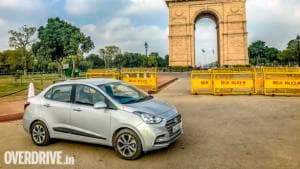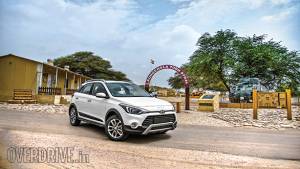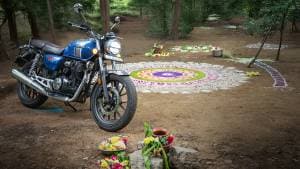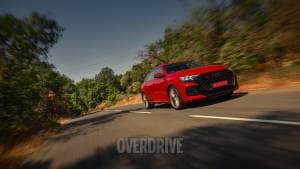Heritage drives with Hyundai
For a while now, Mumbai has been overshadowed by the monsoon rain with the sun barely showing its face. Hoping to get some relief from the constant downpour, we took the Hyundai Grand i10 and headed east, away from the coast. We made our way towards Aurangabad to visit some of the oldest monuments in the country. Our route, which measured around 370km, took us via Chakan and Ahmednagar.

We left from Mumbai at noon, and the poor visibility due to the pouring rain made dodging potholes all the more difficult. Things got worse when we got closer to Chakan as daylight faded and the truck traffic increased. Thankfully, the Grand i10 was just the right size to squeeze in and out of traffic effortlessly till we eventually made it past Chakan's industrial area. After that, it was a non-stop run till we reached Aurangabad late at night.
The next morning, we woke up to a slight drizzle which we barely noticed after enduring the heavy Mumbai rain. After a quick breakfast, we headed to the first monument on our list, the Daulatabad Fort. The 15km drive was quite beautiful as the rains had cleared up the air of all the pollution and also laid out a carpet of green grass on both sides of the road.
The fort, which was initially called the Devagiri Fort, was built by Raja Bhillamraj, of the Yadav Dynasty. However, in 1296 AD it was taken over by the Sultans of Delhi. It is located on a 200 metre high conical hill and was one of the most powerful forts in the Deccan. While the bottom of the hill has several fortified walls, a temple, an assembly area and the Chand Minar, the top houses the Chini Mahal.
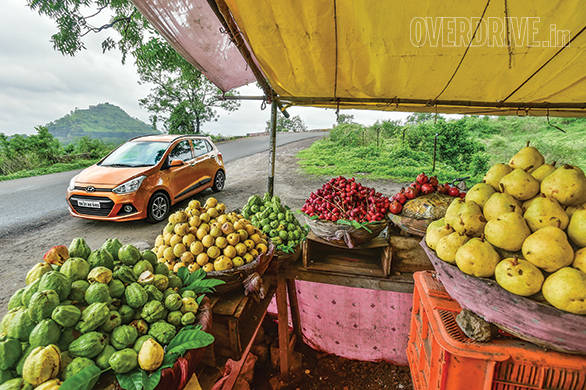
When Muhammad bin Tughluq took over the throne, he had the entire city of Delhi migrated to Aurangabad to make it his new capital. However, for various reasons, Tughluq had his capital shifted back to Delhi, demanding the same arduous journey of all his people. It's quite astonishing how an entire city had to literally pick up everything they had and travel halfway across the country by foot or horse! These days, we don't even think twice about travelling such distances, especially with cars like the Grand i10 making it so easy to do so. Despite its compact dimensions, you barely feel tired while covering long distances. Also helping with this is the plush cabin that features a great music system with Bluetooth connectivity.
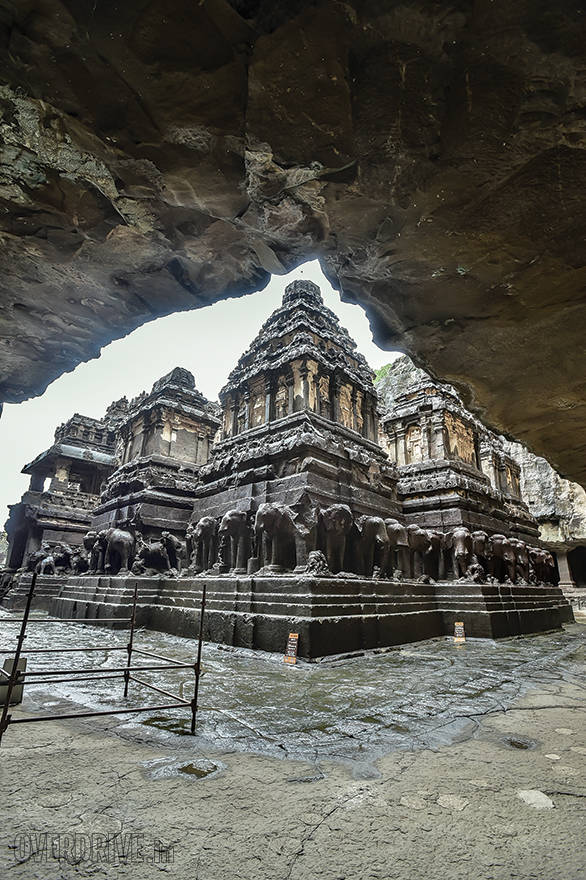 Aurangabad's diversity is showcased
Aurangabad's diversity is showcased
in various monuments like the Daulatabad Fort, the Ajanta caves and the Kailasa temple
Our next stop was Aurangzeb's tomb, which is en route to Ellora caves. Unlike most other emperors' tombs, his was not located in a grand building surrounded by large gardens. Instead, he was buried in a humble mosque in the town of Khuldabad by his son Muhammad Azam Shah. One of the locals who directed us to the tomb told us sincerely that what the history books say about Aurangzeb is not entirely true. He said that Aurangzeb was actually a just and wise ruler who enjoyed poetry and literature.
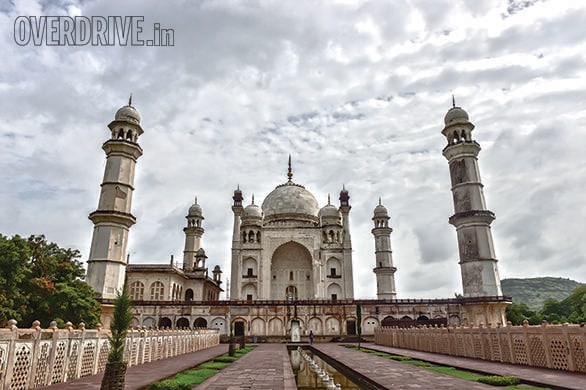
Once we had a look around, we were back in the Grand i10 and headed for the famous Ellora caves. The site has 34 caves which were excavated from the 5th century AD to the 11th century AD. 12 of these caves were Buddhist monasteries and shrines, 17 were Hindu temples and five were Jain temples. However, the most astounding excavation is Cave 16, the Kailasa temple.
This temple, which is dedicated to Lord Shiva, is the largest rock-cut monolithic monument in the world. From outside the temple, you might not get what all the fuss is about. However, step inside the cave and your jaw will drop in amazement. The main temple, which is still part of one rock, stands in the middle of a large excavation. Although most of it has been ruined, quite a few detailed sculptures are still intact.
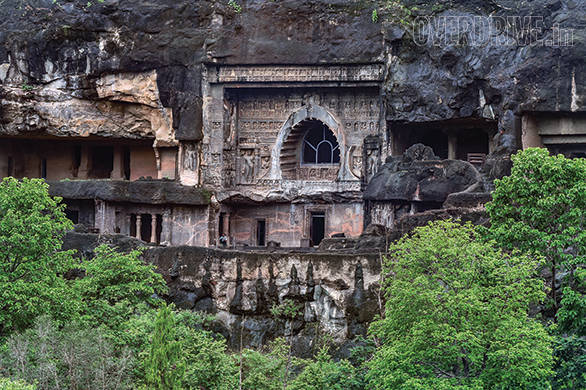
After taking in the sights, we headed out to the last site for the day â" Ajanta caves. This site is roughly 100km from Ellora, and there are lovely ghat sections which were a real joy to drive on in the Grand i10. Thanks to its nimble and agile handling and linear power delivery, the Grand i10 really won us over. Adding to that are the safety equipment like dual airbags and ABS which further improve your confidence on such roads.
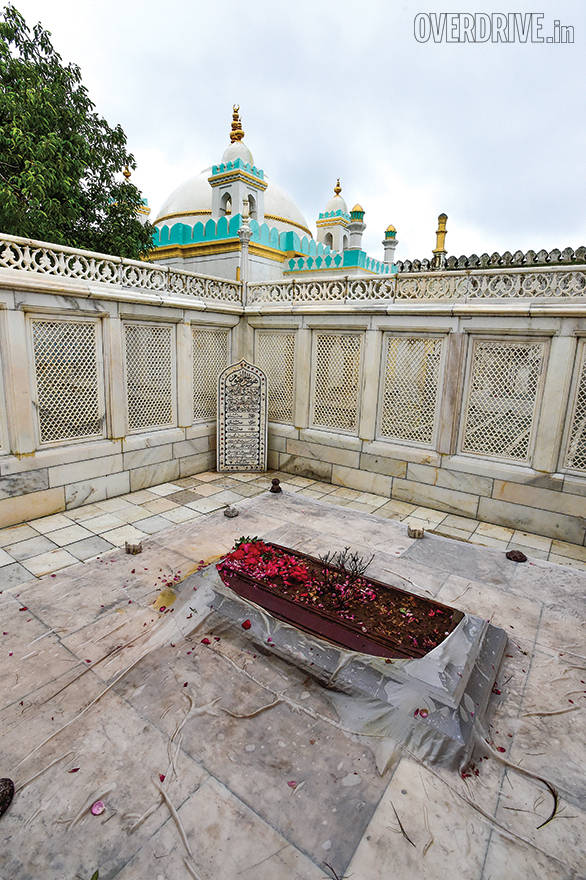 Aurangzeb's tomb (top) is located in a humble mosque in Khuldabad
Aurangzeb's tomb (top) is located in a humble mosque in Khuldabad
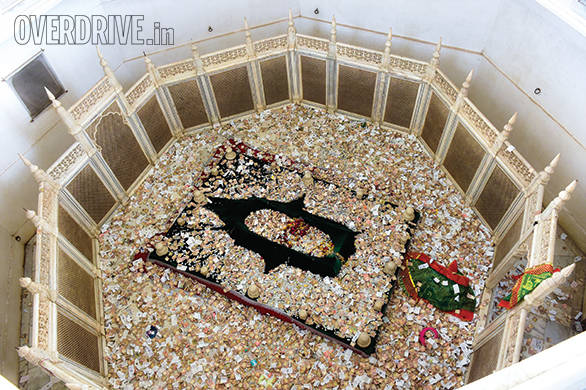 However, his wife was buried in the grand Bibi-Ka-Maqbara
However, his wife was buried in the grand Bibi-Ka-Maqbara
Once we got there, we had to take a shuttle bus up to the booking counter and then walk to the caves. The caves, which were excavated from the 2nd century BC to 6th century AD, are located in a horse-shoe shaped gorge of the Waghora River. There are 30 caves in total and some of them have magnificent paintings depicting episodes of Gautama Buddha's life. These painting are very sensitive to light and temperature, and the Archaeological Survey of India is doing all it can to save what's left of these ancient paintings. After a long walk, we decided to call it a day so we could get an early start the next day.
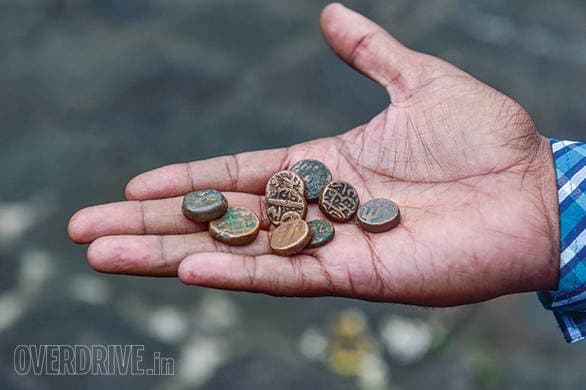
Before we began our journey back to Mumbai, we made one final stop at the Bibi-Ka-Maqbara or the Tomb of the Lady. This monument was built by Azam Shah in memory of his mother, Rabia-ud-Daurani. The mausoleum draws inspiration from the Taj Mahal and so it is known as the Taj of the Deccan. Unlike the Taj Mahal, this monument was not entirely built of marble â" the mid portion of the main structure is made of basaltic trap covered with fine plaster. While most people make comparisons to the Taj, there is a lot of beautiful detailing around the mausoleum that sets it apart.
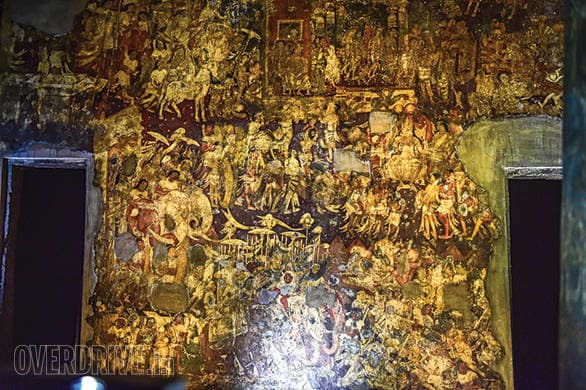 The paintings in the Ajanta caves are incredibly detailed. Unfortunately, most of them have faded away with time.
The paintings in the Ajanta caves are incredibly detailed. Unfortunately, most of them have faded away with time.
With all the important locations covered, it was time for us to head back to Mumbai. The journey back was quite scenic with the large expanses of green fields on both sides of the almost empty dual carriageway. As we got onto the Mumbai-Pune Expressway, the sun showed its face one last time, before it was covered by a mob of dark clouds and we were back in the rain.
Starts Rs 4.98 Lakhs
1186cc
Manual
75
194
24.95 Kmpl

